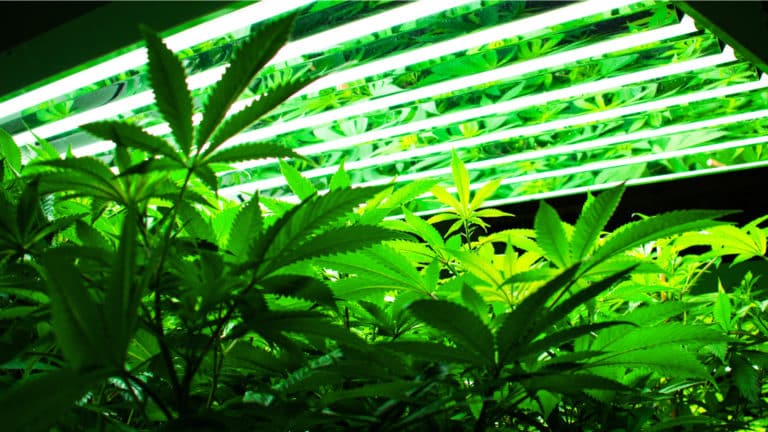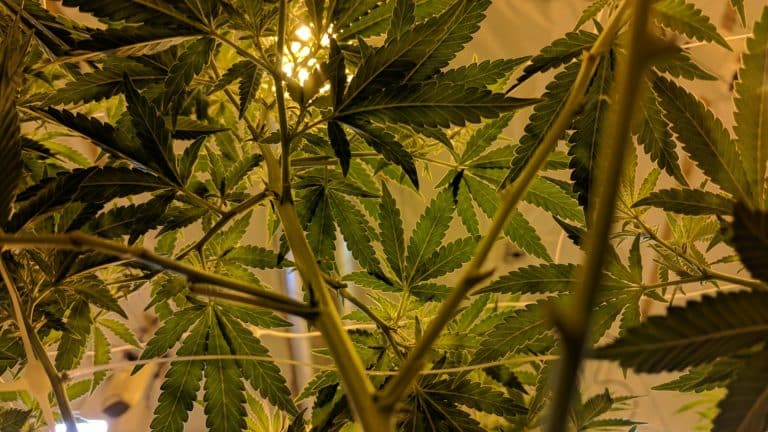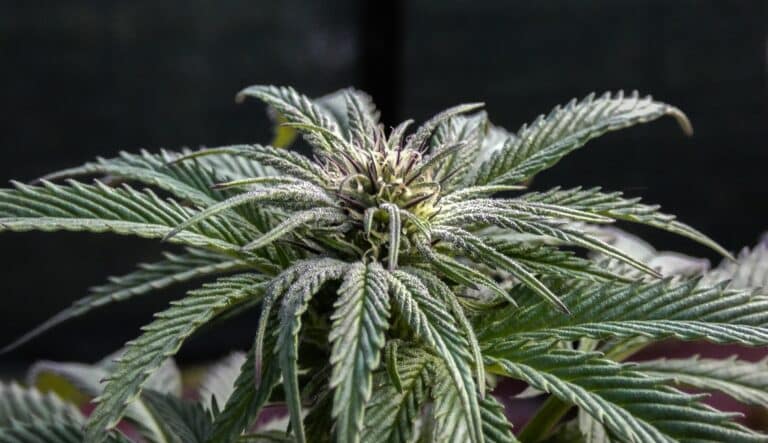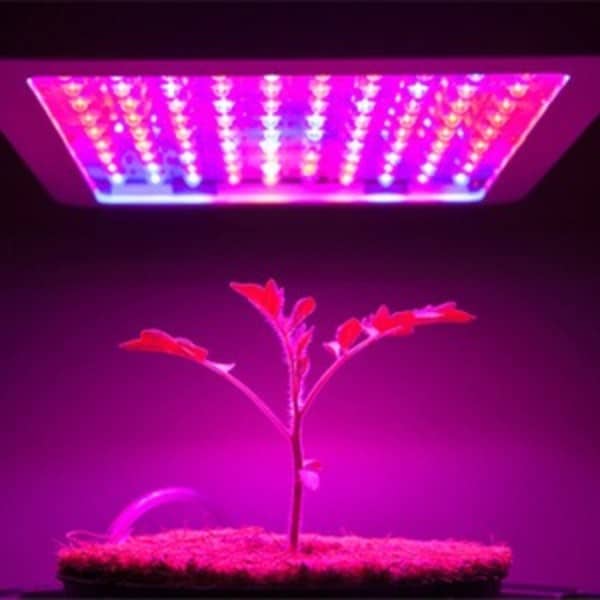
How Led Grow Lights Work
LED grow light technology is accelerated and delivered on some
big promises over the past two years. LED Grow lights were touted as the next
big thing for the past 5 -years but missed the mark until recently. With money
pouring into research and development this exciting grow options time has come.
It is now possible for an LED grow light to produce the same quantity of light
as a HPS only using 40% electricity and creating much less heat.
All that is good and well but are you wondering how all that
magic happens? I know I’ve wanted to understand the process for some time now
so, I’m doing the research and writing this article for me and you. LED grow
lights are a very technical topic, but I’ll try to keep it as simple as
possible.
Pull up your socks because here we go. LED stands for
light-emitting diodes. These little magic lights are found in every form of
electronics today from TVs to Phones.
What the heck is a Diode?
To understand what a Light Emitting Diode is first you’ll need to know what a
semiconductor is. Keeping it simple, a semiconductor is made up of materials
that have specific electrical characteristics. Some materials act as resistors
and some as conductors. The common denominator is that most semiconductors are
made from silicon. In the case of light emitting diodes, aluminum gallium arsenide or AIGaAs
is used.
Diodes are just semiconductor devices that conduct current in a
specific way. Think of diodes as tiny light bulbs that fit on a circuit.
These LEDs don’t rely on passing current through tiny filaments to produce
light which means they don’t burn out like traditional incandescent light bulbs
and they don’t produce nearly as much heat.
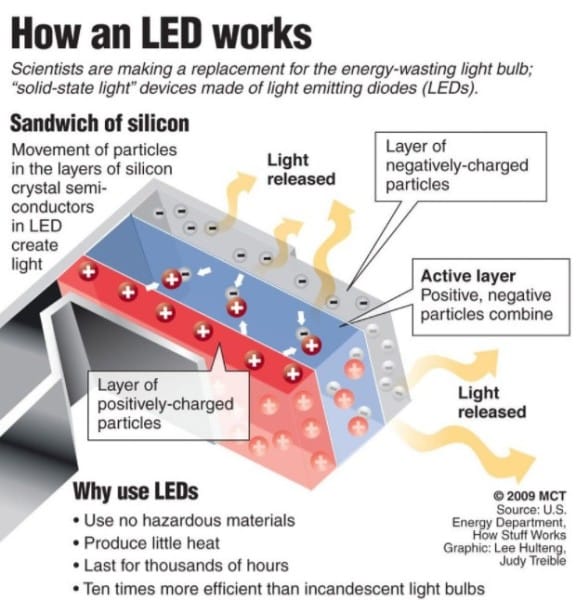
Photo By US. Department of Energy Department
N-type materials
Within N-Type semiconductors, free electrons travel from
negatively charged area to positively charged areas.
P-type materials
Within P-Type materials, electrons “jump” into holes which allow
them to move to positively charged areas.
How this all comes together
The diode is made up from both “N” and “P”-type materials with
electrodes on both ends. Electricity is only able to flow through the diode one
way.
If there is no voltage applied to the diode, the electrons in
the N-type material fill up the holes in the P-type material as well as the
tiny space between the two materials which is called the depletion zone.
Within the depletion zone all the holes in the N-Type material
are full and, electrons are actively filling holes. Since all the holes are
filled; light can’t be created because the charge isn’t able to flow.
To make the diode light up, you need to rid the unit of its depletion
zone. This is achieved by forcing electrons from the N-Type material to the
P-Type material which causes the holes to move in reverse direction.
Emptying the Depletion Zone
Emptying the depletion zone is achieved by connecting the N-material
to the negative end of a circuit, and the P-Type side to the positive end of a
circuit.
Since opposites attract the negative electrode repels the
electrons in the N-Type material and, those electrons are attracted to the
positive electrode on the opposite side of the circuit. The holes in the P-type
material are then pushed towards the negative electrode.
When the voltage applied to the circuit and, the electrical
field becomes strong enough to create a large enough difference between the
electrodes is when the magic starts to happen.
The electrons that have been plugging up the holes in the P-Type
material will come to life when enough voltage is applied which allows the
charge to travel across the diode.
The electrons in the depletion zone will come out to play once
the voltage is high enough, getting rid of it altogether. This allows for a
charge to move across the diode creating light.
Hold on how is the light created?
The photons emanating from the diode are invisible to the naked
eye because the wavelength of light generated is not within the visible
spectrum of light. The “color” or the wavelength of light emitted is affected
by the type of material the electrons drop through (remember the holes) and how
far they drop. The distance the photons drop can shorter or longer and this dictated the wavelength of the photons.
Light visible to the naked eye that is generated by your led
grow light is visible because it fell a farther distance through the holes in
the P-Type material.
Visible light LEDs are created from materials that have a larger
gap (holes) which creates a greater drop for the photon which creates greater energy.




